 advertisements advertisements
|

|
NASA motion base shuttle simulator lands at museum for display
April 12, 2022 – A retired NASA space shuttle simulator that was used to prepare astronauts for the motion of the vehicle in flight has moved again, this time to enter its new museum home.
The Shuttle Mission Simulator-Motion Base (SMS-MB), which was "flown" by every crew as part of their training at NASA's Johnson Space Center in Houston, arrived on Tuesday (April 12) at the Lone Star Flight Museum at Ellington Airport to go on static display. Towed to the facility on wheels, the roll-in coincided with the 41st anniversary of STS-1, the first space shuttle mission, which launched in 1981.
"I am happy that it is here and that people are remembering back to STS-1, which was a great mission," George Abbey, the former director of Johnson Space Center who was serving as director of flight operations when the SMS-MB was first used, said in an interview with collectSPACE. "It proved that we can build a vehicle that could do all of the things as the shuttle ultimately did, bring it back home to Earth and land on a runway. That was due to the training the crew had, so this simulator played an important role."
The arrival also marked the completion of a 5,000-hour restoration, which reunited many of the now-retired engineers, technicians and instructors who operated and maintained the simulator during its use at NASA. The volunteer effort included removing over a thousand pounds of cable and replacing 1,600 tiny incandescent bulbs with just as many LED fixtures by soldering each into place to light up all of the panels and control switches.
"It always takes a team, right?" said Bonnie Dunbar, a former NASA astronaut who trained for her five space shuttle missions using the simulator and who now serves on the board of directors for the Lone Star Flight Museum. "if you take a look at the entire history, 40 years or so, you think of all the people who participated in it. Many of them are retired and many of those who have passed away have their children and grandchildren here. We want them to have a place where they come and see the simulator."
Members of the restoration team joined Dunbar and fellow former astronaut Mario Runco as they walked the simulator into its permanent home. While much of the restoration was completed at the Johnson Space Center, the SMS-MB was moved to Ellington in early April for final painting. The procession entered the Heritage Hangar at the Lone Star Flight Museum, where Abbey and others welcomed it in.
Final approach
The SMS-MB was built in 1976 to support the approach and landing tests flown by the prototype orbiter Enterprise off the back of a modified Boeing 747 jetliner. The simulator was then modified for the orbital flight tests and operational missions that followed. It was first used to support flight crew training for the STS-1 mission on Jan. 9, 1979.
A full-scale replica of the space shuttle's upper level flight deck, the SMS-MB included the commander and pilot stations, as well as flight engineer and mission specialist seats. The orbiter's forward windows were outfitted with screens that displayed computer-driven simulated views of the various phases of a flight.
What made the SMS-MB unique among NASA's shuttle training mockups, though, was its ability to move. Mounted atop a platform supported by six hydraulic, computer-controlled legs, the cabin could pitch forward and back, side to side and be lifted up and down to approximate the orientation of the winged spacecraft as it was used simulate launch, orbital operations and landing.
When the shuttle program came to an end in 2011, NASA reached an agreement with Texas A&M University to relocate the complete simulator to College Station, where it would be put back into use as a teaching and engineering development tool. But after it was moved, the funding and logistics for such a setup fell through and the SMS-MB was put into storage.
Dunbar, who joined the school's faculty in 2016, was tapped to find the simulator a new home and with the help of Carl Brainerd, who worked on the simulator throughout its 40-year history and then later led its restoration, identified the Lone Star as the site of its new display.
"It is very satisfying," said Brainerd, reacting to seeing the simulator in place at the museum. "I worked on it for 38 years and now I in retirement, I am still working on it. It's great to see it rejuvenated."
Touchdown
Now in place at the museum, the SMS-MB will no longer move. Reconstructing the hydraulic platform was too costly and was beyond what the museum could support. The static display, though, will allow for new generations to learn about how astronauts trained to fly into space.
In addition to the simulator itself, the exhibit will include related artifacts, such as the trainer's console and crew procedures, as well audio and video that was recorded during the simulator's last run with the final shuttle crew 11 years ago.
The museum also intends to invite former shuttle pilots and commanders who flew the simulator to deliver weekend talks, helping the public understand the historical importance of the SMS-MB and how it compared to the real vehicles.
The simulator is the Lone Star Flight Museum's first major artifact from spaceflight history. The museum's other exhibits include NASA's small pressurized rover and a robonaut concept, but the collection is primary focused on aircraft, including a North American B-25 Mitchell twin-engine medium bomber and Douglas DC-3 propeller-driven airliner. Many of the planes in the museum still fly in airshows and guests can book warbird flights.
"This was a terrific opportunity for us to save and preserve a wonderful artifact from the space shuttle," said Douglas Owens, president and CEO of the Lone Star Flight Museum. "The public will have the opportunity to go inside and witness a simulated mission that will be playing in the background. The cockpit will be lit up just as if somebody were flying it."
"I think public will very much enjoy this and for us it is great to be able to bring this piece of spaceflight history to them," Owens said. |
|
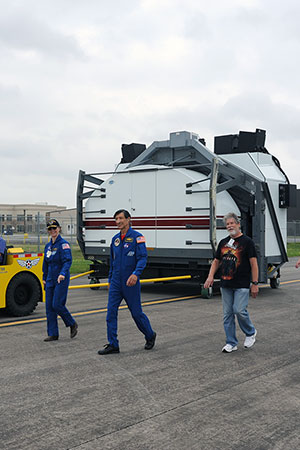
Former NASA astronauts Bonnie Dunbar and Mario Runco lead a procession accompanying the restored Shuttle Mission Simulator-Motion Base to the Lone Star Flight Museum at Ellington Airport in Houston on Tuesday, April 12, 2022. (collectSPACE/Ron Zaguli)
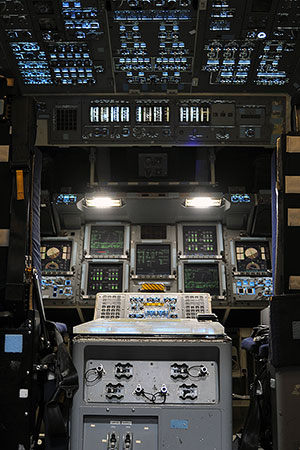
NASA's retired Shuttle Mission Simulator-Motion Base (SMS-MB) is lit up for the first time after arriving in its new permanent home, the Lone Star Flight Museum at Ellington Field in Houston, on Tuesday, April, 12, 2022. (collectSPACE/Ron Zaguli)
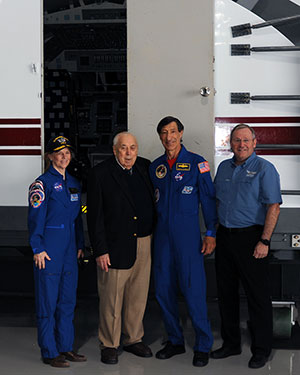
Former NASA astronauts Bonnie Dunbar and Mario Runco pose with former Johnson Space Center director George Abbey and Lone Star Flight Museum president and CEO Douglas Owens in front of the Shuttle Mission Simulator. (collectSPACE/Ron Zaguli) |
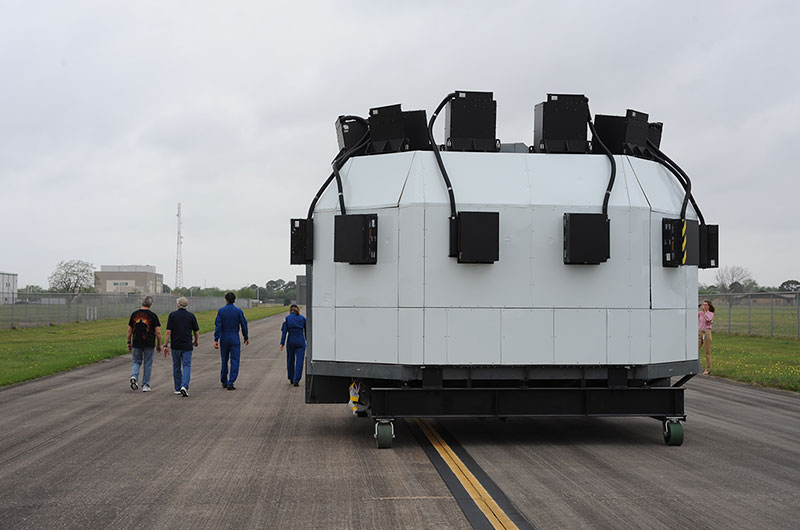
NASA's Shuttle Mission Simulator-Motion Base is seen from behind as it is towed down the taxiway at Ellington Airport to the Lone Star Flight Museum in Houston on Tuesday, April 12, 2022. (collectSPACE/Ron Zaguli) |
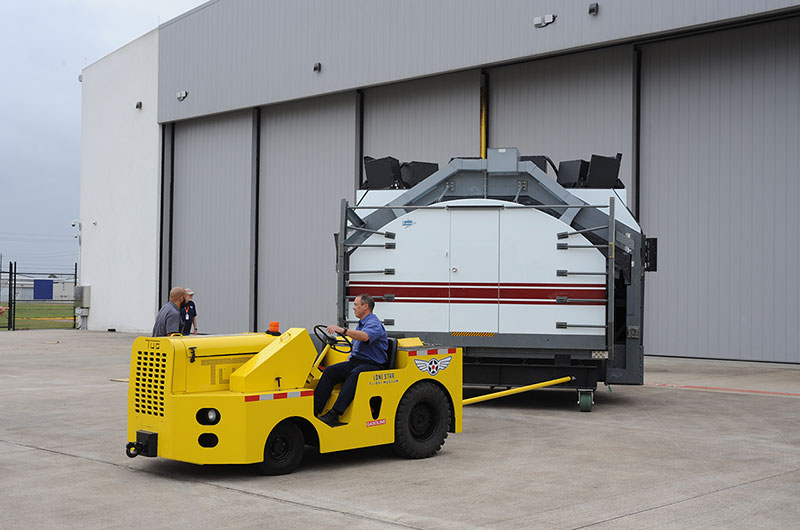
The Shuttle Mission Simulator-Motion Base approaches the doors of the Heritage Hangar at the Lone Star Flight Museum. (collectSPACE/Ron Zaguli) |
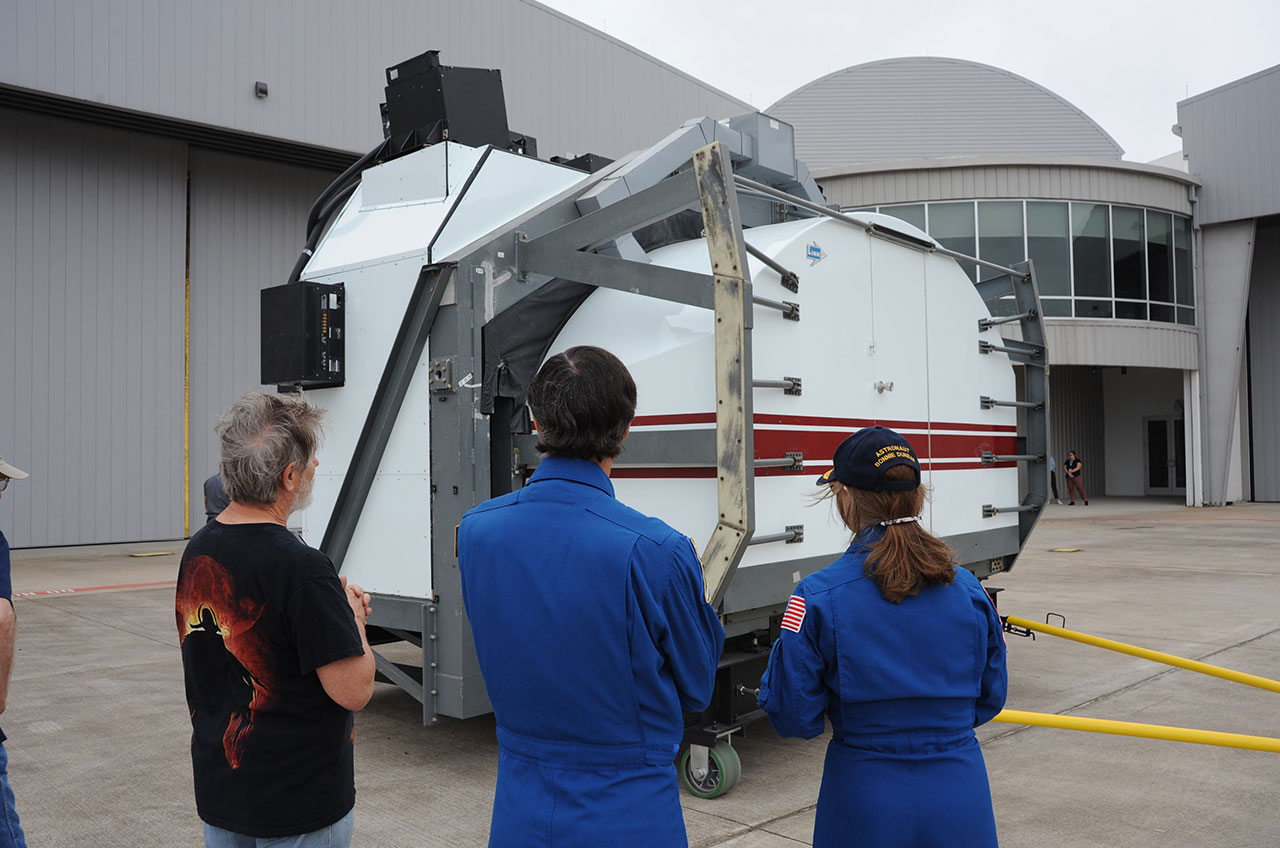
Former NASA astronauts Mario Runco and Bonnie Dunbar look on as the Shuttle Mission Simulator-Motion Base they both used to train approaches its new permanent home, the Lone Star Flight Museum at Ellington Airport in Houston. (collectSPACE/Ron Zaguli) |
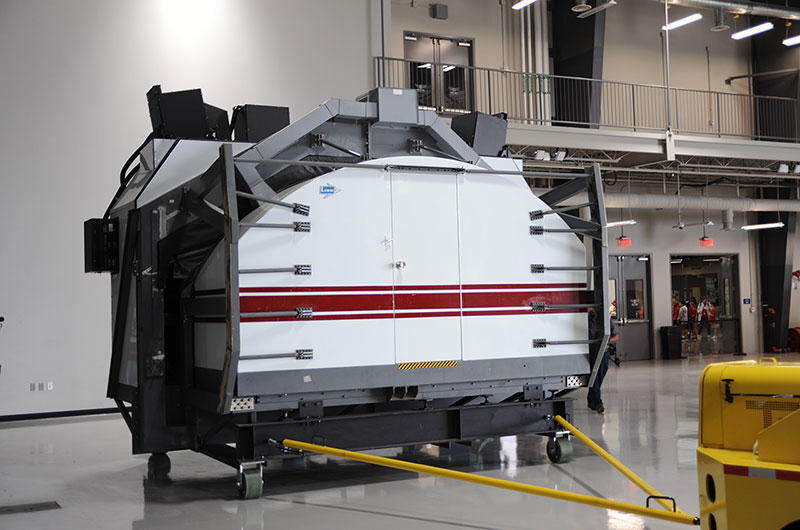
The Shuttle Mission Simulator-Motion Base is moved into place in the Heritage Hangar at the Lone Star Flight Museum. (collectSPACE/Ron Zaguli) |
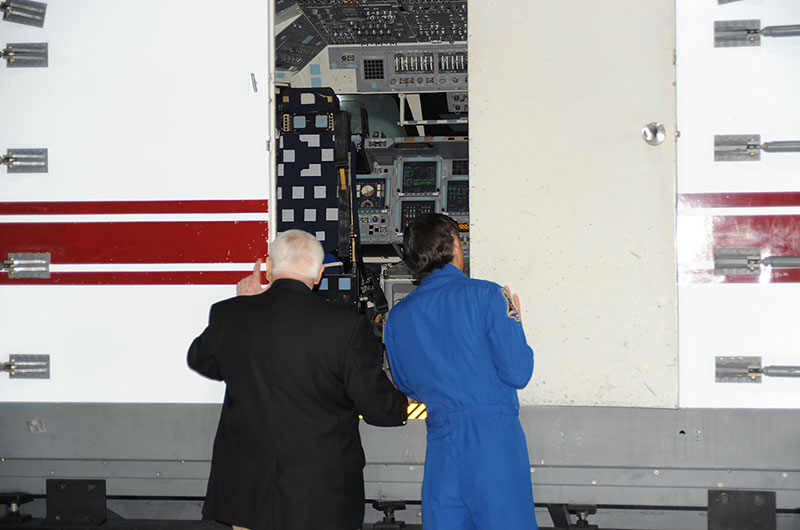
Former Johnson Space Center director George Abbey and former NASA astronaut Mario Runco peer into the Shuttle Mission Simulator after its arrival at the Lone Star Flight Museum for display, on Tuesday, April 12, 2022. (collectSPACE/Ron Zaguli) |
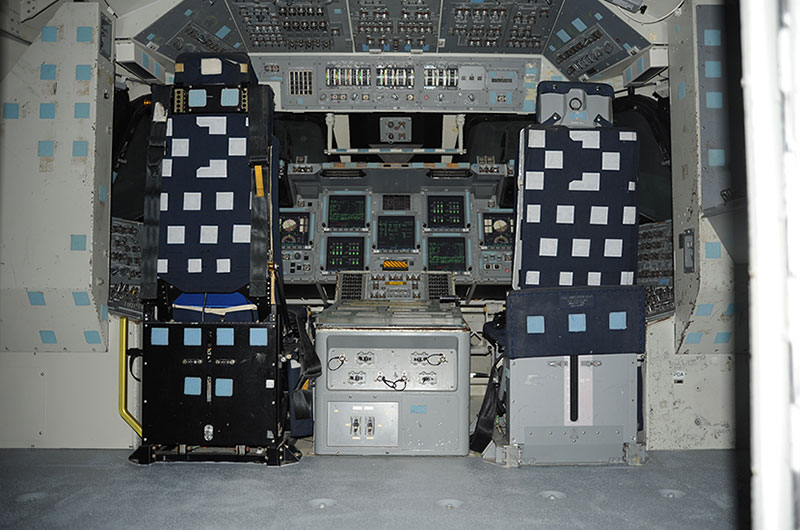
The restored interior of NASA's Shuttle Mission Simulator-Motion Base prior to it being powered for display at the Lone Star Flight Museum in Houston on Tuesday, April 12, 2022. (collectSPACE/Ron Zaguli) |
|

© collectSPACE. All rights reserved.
|
|

|

|
